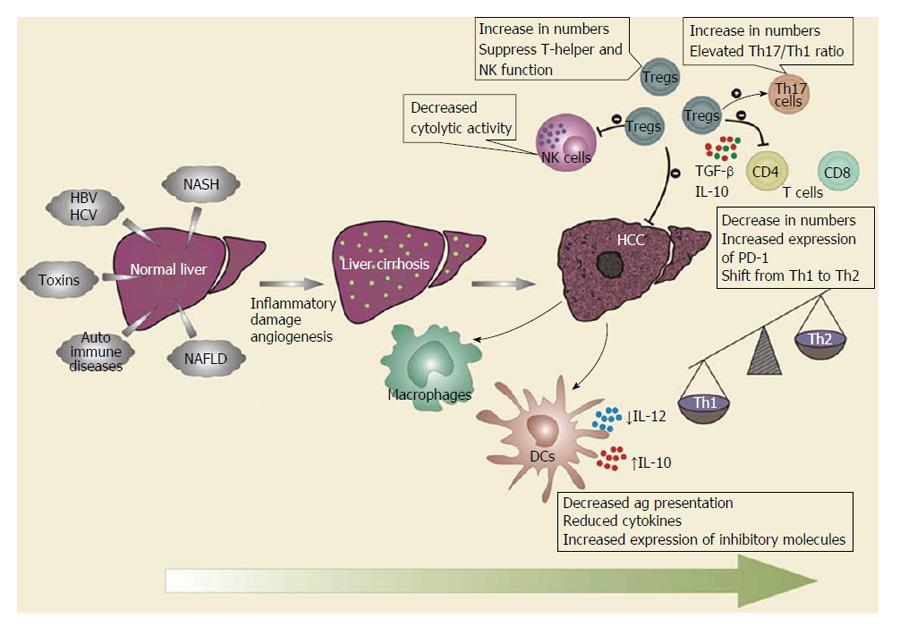Copyright
©The Author(s) 2015.
World J Hepatol. Aug 18, 2015; 7(17): 2080-2090
Published online Aug 18, 2015. doi: 10.4254/wjh.v7.i17.2080
Published online Aug 18, 2015. doi: 10.4254/wjh.v7.i17.2080
Figure 1 Role of immune cells in hepatocellular carcinoma.
As the disease progresses from cirrhosis of the liver to hepatocellular carcinoma (HCC), the functions of various immune cells become dysregulated. Dendritic cells (DCs) lose their antigen presentation capabilities with the reduced secretion of Th1 cytokines. Macrophages differentiate into an “alternatively-activated phenotype” that generates a Th2-type immune response that promotes regulatory T cell (Tregs) recruitment and development. Natural killer (NK) cells have reduced cytolytic activities. T cells, both CD4+ and CD8+, decrease in numbers with attenuated function and increased expression of inhibitory receptors during HCC. Th17 cells increase in number and correlate with angiogenesis and poor-prognosis. Tregs exert negative effects on T cells, DCs, and NK cells, and may promote the differentiation of Th17 cells via immunosuppressive cytokines. There is shift in overall cytokine milieu from a Th1 to Th2 profile. HBV: Hepatitis B virus; HCV: Hepatitis C virus; IL-12: Interleukin 12; TGF: Transforming growth factor.
- Citation: Sachdeva M, Chawla YK, Arora SK. Immunology of hepatocellular carcinoma. World J Hepatol 2015; 7(17): 2080-2090
- URL: https://www.wjgnet.com/1948-5182/full/v7/i17/2080.htm
- DOI: https://dx.doi.org/10.4254/wjh.v7.i17.2080









